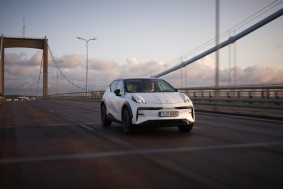India has made history as its Moon mission becomes the first to land in the lunar south pole region. The country joins an elite club of others to achieve a soft landing on the Moon, after the US, the former Soviet Union and China.
The Vikram lander from Chandrayaan-3 successfully touched down as planned at 18:04 local time (12:34 GMT). Celebrations have broken out across the country, with Prime Minister Narendra Modi, who was watching the event live from South Africa where he is attending the Brics summit, saying: "India is now on the Moon".
"We have reached where no other country could. It's a joyous occasion," he added. Indian Space Research Organisation (Isro) chief Sreedhara Panicker Somanath said: “The successful landing "is not our work alone, this is the work of a generation of Isro scientists".
India's second lunar mission, which also attempted to soft-land there in 2019, was unsuccessful - its lander and rover were destroyed, though its orbiter survived. On Wednesday, tense moments preceded the touchdown as the lander - called Vikram after Isro founder Vikram Sarabhai - began its precarious descent, carrying within its belly the 26kg rover named Pragyaan (the Sanskrit word for wisdom).
The lander's speed was gradually reduced from 1.68km per second to almost zero, enabling it to make a soft landing on the lunar surface. In a few hours - scientists say once the dust has settled - the six-wheeled rover will crawl out of the lander's belly and roam around the rocks and craters on the Moon's surface, gathering crucial data and images to be sent to Earth.
One of the mission's major goals is to hunt for water-based ice which, scientists say, could support human habitation on the Moon in future. It could also be used for supplying propellant for spacecraft headed to Mars and other distant destinations. Scientists say the surface area that remains in permanent shadow there is huge and could hold reserves of water ice.
The lander and the rover are carrying five scientific instruments which will help discover the physical characteristics of the surface of the Moon, the atmosphere close to the surface and the tectonic activity to study what goes on below the surface. The rover is carrying an Indian flag and its wheels also have Isro's logo and emblem embossed on them so that they leave imprints on the lunar soil during the Moon walk, an official said.
Chandrayaan-3, India's third lunar mission, will work to build on the success of the earlier Moon missions and Isro officials say it will help make some "very substantial" scientific discovery. It comes 15 years after Chandrayaan-1, the country's first Moon mission in 2008, which discovered the presence of water molecules on the parched lunar surface and established that the Moon has an atmosphere during daytime.
And despite failing the soft landing, Chandrayaan-2 was not a complete write-off - its orbiter continues to circle the Moon even today and will help the Vikram lander send images and data to Earth for analysis.
India is not the only country with an eye on the Moon - there's a growing global interest in it, with many other missions headed to the lunar surface in the near future. And scientists say there is still much to understand about the Moon that's often described as a gateway to deep space.












